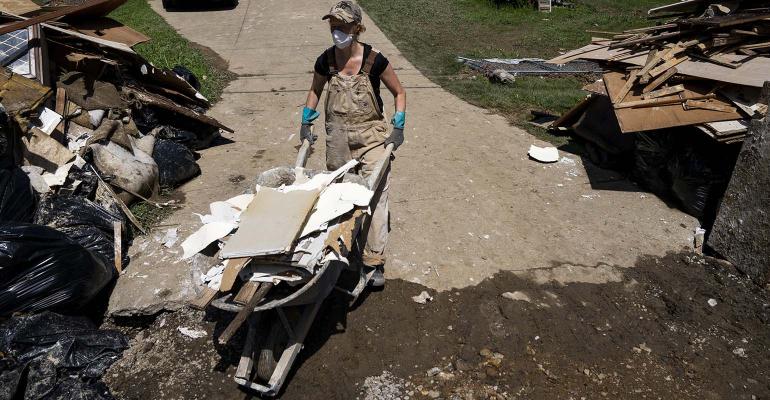In a move to accelerate the fight against climate change, President Joe Biden signed the Inflation Reduction Act (IRA) into law on August 16, marking the federal government’s largest commitment to climate action yet—a massive $369 billion investment in clean energy initiatives.
Under the legislation, greenhouse gas emissions are projected to decrease 40% by 2030 based on 2005 levels—a critical component in preventing more environmental damage. Additionally, the bill places a major focus on electric vehicles to encourage a nationwide shift away from driving gasoline-powered cars.
However, as important as these carbon reduction efforts are, they do not protect us from our current reality of repeated and worsening natural disasters. This summer alone, we have seen catastrophic flooding, brutal heatwaves and droughts disrupt the U.S. According to the National Oceanic and Atmospheric Administration, nine weather or climate disaster events have occurred within the first six months of 2022, each event totaling over one billion dollars in financial losses and leaving a significant economic toll behind for affected communities. These statistics, compared to the same data from previous years, indicate that natural disasters are increasing in frequency and cost, in part due to climate change. Further, the White House issued a statement this spring estimating natural disasters made worse by climate change could cost the U.S. federal budget about $2 trillion each year by the end of the century.
Unfortunately, the IRA fails to address this side of the climate equation. If we do not have the solutions in place to minimize the impact of natural disasters or mitigate their risk, the IRA’s efforts are likely to be in vain.
Investing in Natural Disaster Recovery
As climate change continues to wreak havoc across the globe it is crucial for both the public and private sectors to invest in natural disaster prevention and recovery. A variety of innovative companies across industries are at the forefront of the natural disaster life cycle, focused on reducing risk, restoring communities after disaster strikes and ultimately building a more resilient future.
Consulting, engineering and construction firms play a vital role in implementing preventative measures that work to reduce fatalities caused by natural disasters. Firms like Jacobs Engineering Group, AECOM and Skanska are equipped to work with federal agencies and municipalities to evaluate certain cities and regions that are at a higher risk for destruction should a natural disaster occur. In turn, these companies can build the infrastructure necessary to deal with potential detrimental risks to populations, infrastructure and assets in those regions.
Another strong example is Generac—a manufacturer of backup generators that steps in to help homeowners maintain power when the grid goes down. We were reminded of their pivotal services during the historic freeze in Texas last year, as thousands of residents relied on its backup generators to maintain heat and electricity during the emergency.
In addition, companies like OshKosh Corporation offer a unique opportunity for investors to support both sides of the climate change equation — carbon reduction initiatives likely to benefit the IRA, as well as disaster recovery. OshKosh Corporation is working to get electric fire trucks and emergency vehicles into fire stations across the U.S. to help combat raging wildfires and other disasters.
Moving forward, regions vulnerable to the perils of climate change will increasingly rely on these types of companies to take charge. If municipalities and federal agencies employ them and investors fund them, these providers become well-positioned to grow and build out more inventory of critical goods and services that wouldn’t exist otherwise.
Andrew Chanin is Co-Founder and CEO of ProcureAM.





